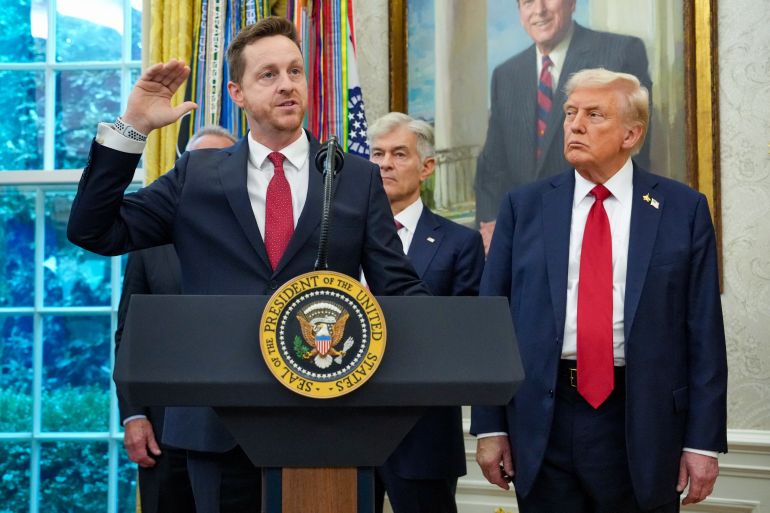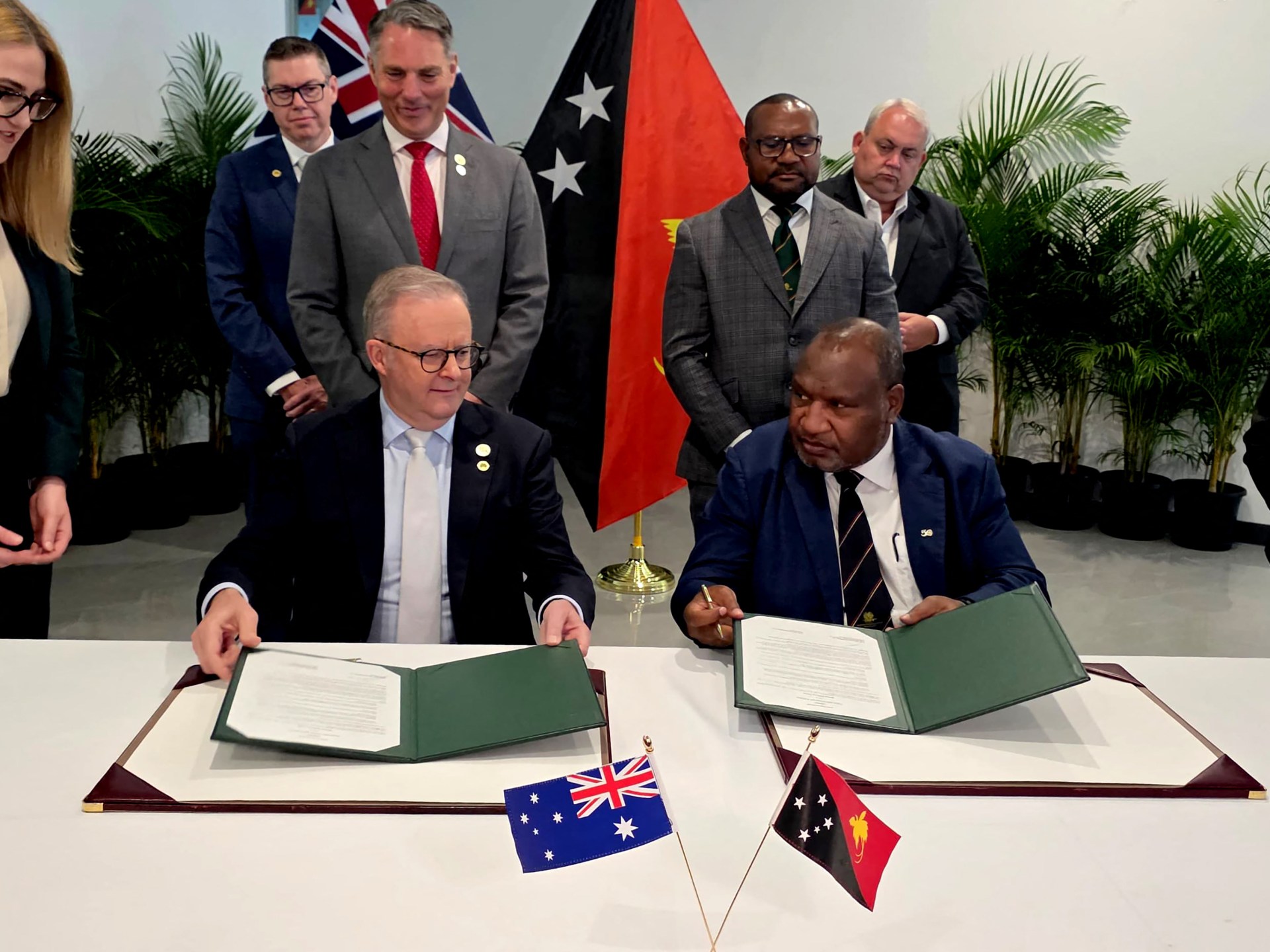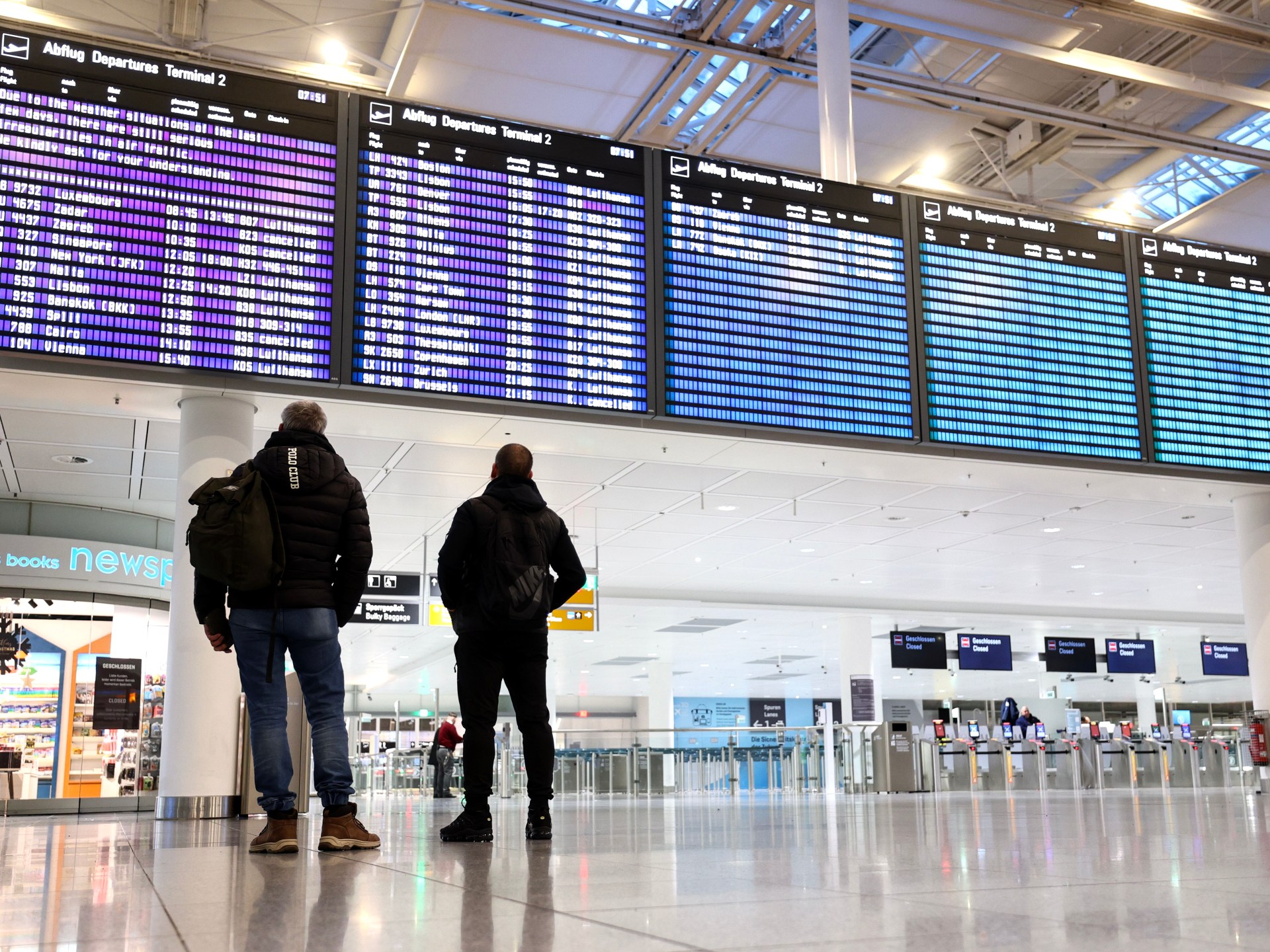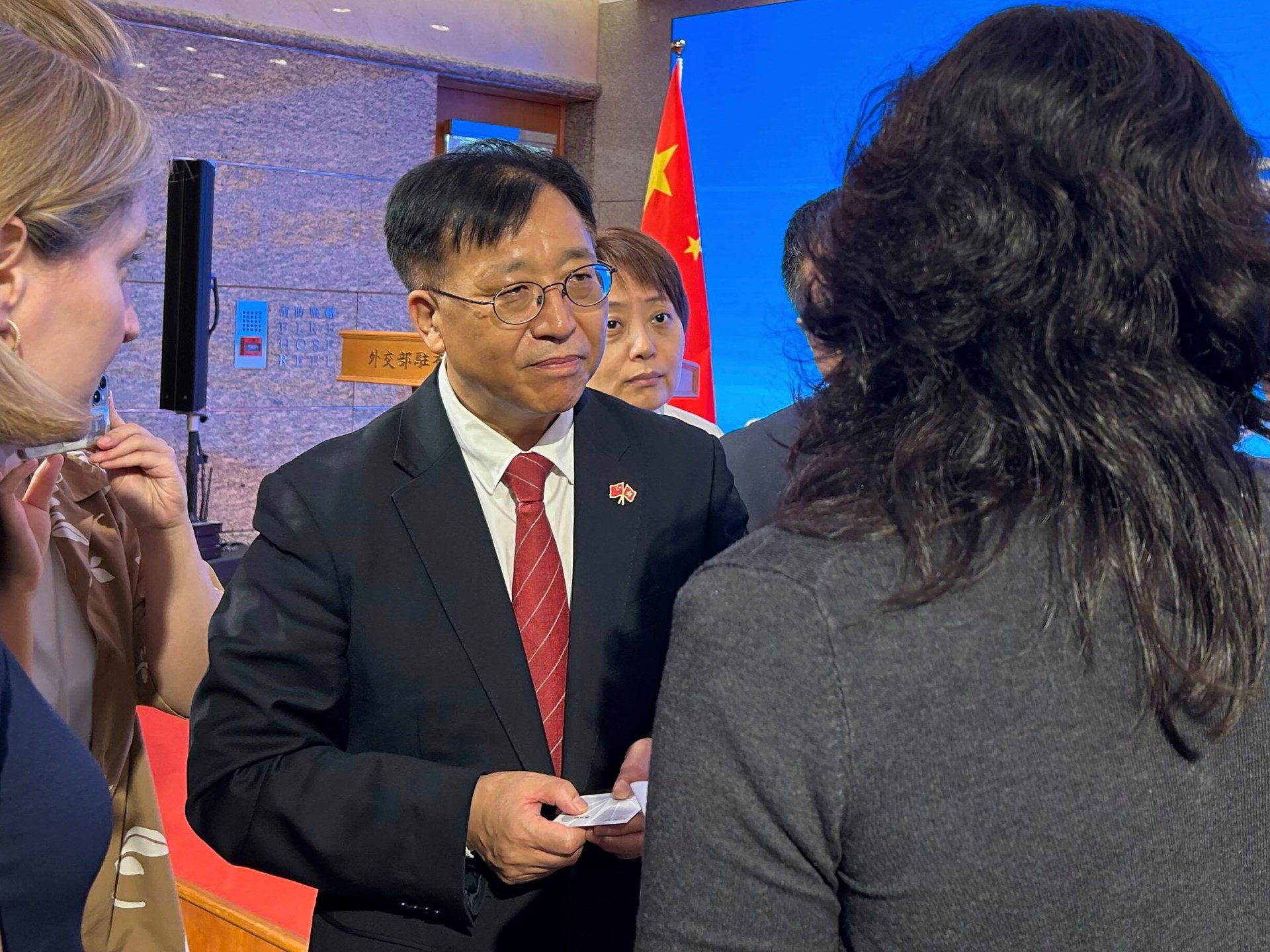TrumpRx, the new website that will let American citizens purchase prescription drugs from reputable pharmaceutical companies at reduced prices, was made public earlier this week by US President Donald Trump.
Pfizer, the first United States pharmaceutical group to sign up to the website, said it would offer discounts of up to 85 percent on the cost of its medicines for those not using health insurance policies to pay and for those on the government’s low-cost insurance programme, Medicaid. Additionally, Pfizer will lower the cost of its medications for the Medicaid program.
Recommended Stories
list of 3 itemsend of list
The announcement prompted shares in the pharmaceuticals sector to lift sharply this week, signalling a favourable response from markets and the pharmaceuticals industry.
What are the key details about the new service, how it will operate, and why it is being launched.
What is TrumpRx and when is it being launched?
In the first quarter of 2026, the new website will be launched. It is a platform from which consumers will be able to buy prescription medicines directly from pharmaceutical companies without going through insurance.
Customers will be directed to the drug’s manufacturer after searching for the prescription drug on the website.
They will have access to discounted prices much closer to those typically paid by national health services in foreign countries at what are known as “most favoured nation” prices.
The website will also be accessible to beneficiaries of Medicaid, the federal government’s insurance program for people with lower-income families.
“By taking this bold step, we’re ending the era of global price gouging at the expense of American families”, Trump told a news conference on Tuesday.
What are ‘ most favoured nation ‘ prices?
National health services in other countries, such as Canada, France, Germany, Italy, Japan, the United Kingdom, Switzerland, and Denmark, pay US pharmaceutical companies for prescription drugs.
As these countries buy medicines in bulk, they have much greater purchasing power to demand lower prices than ordinary consumers. This results in pharmaceutical companies selling their products internationally at much lower prices than they do domestically.
The US cannot leverage this sort of purchasing power because it does not have a national health service, so the government cannot influence the price of drugs in the same way.
According to the Trump administration, this means that American pharmaceutical companies are artificially inflating prices while subscribing foreign health services. In May this year, therefore, he signed an executive order aimed at reducing prescription drug prices in the US, stating: “The United States will no longer subsidise the health care of foreign countries”.
Prices continue to fluctuate between countries when a country grants MFN status and commits to providing the recipient country with the same trade advantages it gives any other country with MFN status, but not always at the same low prices. However, it is understood that companies will be expected to offer drugs at their lowest selling price in any other country.
What other actions has Trump taken to reduce the cost of prescription drugs in the US?
The launch of the new website is just one part of Trump’s strategy to reduce prescription medicine prices in the US.
He instructed the CEOs of 17 pharmaceutical companies to lower their prices in a letter sent in July of this year.
In the letter, he laid out demands and promises:
- He demanded that all Medicaid patients receive MFN prices from manufacturers.
- He required manufacturers to stipulate that they will not offer other developed nations better prices for new drugs than prices offered in the United States.
- He promised to give manufacturers the ability to bypass middlemen and sell medicines to patients for prices that are competitive with those in developed nations.
- He promised to use trade policy to support manufacturers in raising prices internationally, provided that increased revenues abroad are reinvested directly into lowering prices for American patients and taxpayers.
The first of these promises is fulfilled by the new TrumpRx website.
To address the second promise, Trump has also announced new 100 percent tariffs on imported, branded pharmaceutical products. Companies that establish production facilities and operations in the US will not be subject to these conditions.
He cited the cost of prescription drugs as one of the reasons for levying these tariffs.
How much more expensive are prescriptions in the US than elsewhere?
According to a 2022 study commissioned by the Office of the Assistant Secretary for Planning and Evaluation, published on the US government website, standard insulin prices in the US are as much as 10 times higher than prices in 33 OECD countries.
The study found that average gross US prices were nearly nine times as high as those in France and the United Kingdom, nearly nine times as high as those in Italy, more than eight times as high as those in Japan, about seven times as high as German, and more than six times as high as those in Canada.
Many people who take insulin already pay a “net price”, which is lower than the standard price via rebates that the manufacturer agrees with insurance companies. However, according to the report, the net price is still typically 2.33 times what it was paid for other nations.
Who will benefit most from this platform?
Anyone who wants to use the platform to purchase prescription medications directly from pharmaceutical companies at a discount instead of purchasing them through insurance coverage.
A 2024 report from the US Census Bureau showed that about 8 percent of the US population (26 million people) did not have health insurance in 2023 – so these people may be able to benefit.
Lower prices are likely to benefit the Medicaid program because of its agreement with Pfizer’s more favorable terms. However, details of how this part of the deal will work have not been fully explained.
According to experts, the majority of Americans will not use the website because most of them currently use insurance to provide medical care.
Stacie B Dusetzina, professor of health policy at the Vanderbilt University Medical Center in Nashville, told Al Jazeera: “There are a small number of people who may be better off purchasing their medicine this way, but the majority of Americans won’t benefit from this type of model”.
However, she continued, “We can’t say for certain that the deal will save the public Medicaid program money without knowing more about how that deal is structured.”
Which drug companies will sell via the new website?
Trump claimed on Tuesday that Pfizer Pharma Group would be the first company to sign and promote the new website.
In return for direct access to consumers, the US pharmaceuticals major has agreed to lower the cost of its prescription drugs for those buying direct via the site (and not using insurance to pay), as well as those on the Medicaid programme. According to Trump, customers will pay prices that are closer to those in the “most favoured nation”.
In a news release, Pfizer said it had “voluntarily agreed to implement measures designed to ensure Americans receive comparable drug prices to those available in other developed countries” and said it will also price “newly launched medicines at parity with other key developed markets”.
The majority of the Company’s primary care treatments and some limited specialty brands will be discounted, the company said in a statement. The company said that this will be true for prices as high as 85 percent and, on average, 50 percent.
The White House and Pfizer gave some examples of primary-care Pfizer medicines which will be available on the TrumpRx website. This list is not exhaustive:
- Eucrisa, a topical ointment for atopic dermatitis, which will be made available at an 80 percent discount for patients purchasing directly.
- A 40% discount will be offered on Xeljanz, a popular oral arthritis medication.
- Zavzpret, a drug used to treat migraines, which will be sold at a 50 percent discount.
- Duavee, an alternative to menopause symptoms, will be available for about 85% off.
- Toviaz, a drug for for overactive bladder.
- Both autoimmune medications, Xeljanz and Abrilada, will be offered at significant discounts.
Some of these drugs will remain very expensive even with the discounts. For instance, Xeljanz, according to Pfizer’s website, costs roughly $6, 000 per month at the most basic price. A 40 percent discount brings this down to $3, 600 per month.
Americans who have health insurance currently can purchase the medication for up to $20 per month, which is frequently the lowest price paid by the terms of their insurance policy.
What else have Pfizer and Trump agreed to under this deal?
According to the company, Pfizer has agreed to lower drug prices generally in the US, keeping them level with those in other developed nations.
The group has also committed to spending $70bn on domestic manufacturing facilities, which will be dedicated to “US research, development and capital projects in the next few years”.
Trump’s tariffs on branded pharmaceuticals made abroad will be followed by the company for a three-year grace period.
“I think today we are turning the tide, and we are reversing an unfair situation”, Pfizer’s CEO Albert Bourla said at a news conference on Tuesday alongside Trump, referring to the difference in prices that people in the US pay for medicines compared with consumers overseas.
Will other drug manufacturers follow suit?
Trump said on Tuesday that other pharmaceutical companies are expected to sign up for the new website, but there have been no new official announcements so far.
According to Dusetzina, “It is obvious that the deal that Pfizer struck is a kind one for the industry.” “The companies that received letters requesting that they act are all likely to make agreements that I would expect to be similarly structured.
These businesses will want commitments so they can avoid any potential tariffs, if nothing else. That is worth a lot to them and to their shareholders. I believe it will still be difficult to tell whether the changes made have any measurable advantages for the typical American.
Overseas pharmaceutical companies may be able to sign up as well.
Swiss businesses, including Roche and Novartis, expressed interest in collaborating with the Trump administration to increase the cost of their medications for Americans.
Stephan Mumenthaler, director general of scienceindustries – which represents about 250 Swiss chemical and pharmaceutical companies – told the Reuters news agency on Wednesday that he expected” mini deals “to come from Swiss and global pharmaceutical companies in the coming days.
They are considering using similar schemes, he said, “How can you omit the margins that middlemen are taking away so that you basically have the same price as before, but the end user still receives a lower price?”
Meanwhile, on Monday, the Pharmaceutical Research and Manufacturers of America (PhRMA) announced the launch of its own website AmericasMedicines.com, which will enable consumers to directly buy drugs from manufacturers as well.
We need policymakers to protect innovation, fix the dysfunctional insurance system that burdens patients with high out-of-pocket expenses, and ensure foreign governments pay their fair share, according to Stephen J. Ubl, president and CEO of PhRMA, in a press release.
How have markets reacted?
On Tuesday, Pfizer’s share price increased 7% in the US and 8% more than that on the UK stock exchange.






